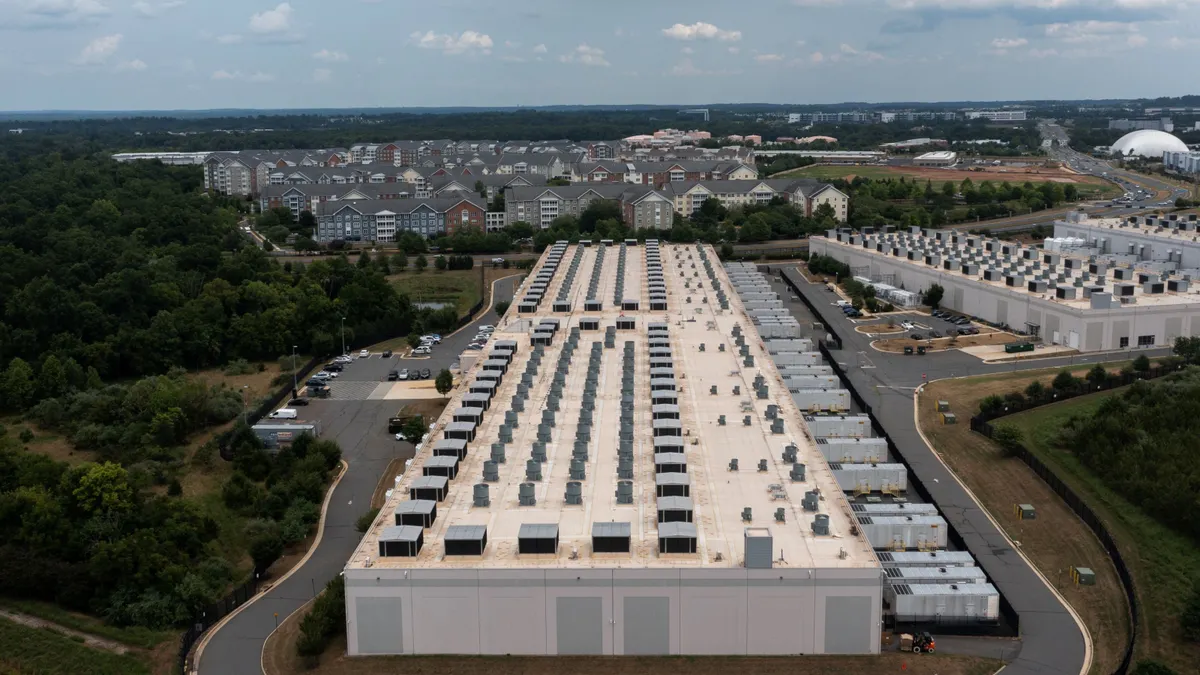It’s not common, but private companies looking to save energy through HVAC and other building system retrofits can get the same help that public entities can get by working with energy service companies, says Tim Unruh, executive director of the National Association of Energy Service Companies.
That might be news to private-sector facilities managers who haven’t had a reason to give ESCOs a close look when they’ve thought about upgrading their systems, Unruh told Facilities Dive.
“The private-sector company has ready access to capital,” he said. “They normally operate with a line of credit. So they can dip into that line of credit as their normal business model.”
But private-sector facilities managers face their own roadblocks if their company balks at drawing down their line of credit for something that doesn’t go into profit-making, Unruh said.
“They have to decide if it’s more important to spend that capital on facilities or on business improvements,” he said. “Many times private companies wait until the equipment fails or is in emergency mode and it’s a do-or-die situation.”
The public-sector experience
ESCOs have been around for decades, but private-company facility managers might be unaware of them because the lion’s share of their work has been with schools, universities, municipalities and other public entities. The public sector has come to know them because the finance guarantee they offer gives facilities managers a powerful argument for obtaining capital funds.
ESCOs step in with repayment assistance when energy upgrades don’t pay for themselves. “If the savings [from the energy retrofit] are short, and the entity can’t meet the note payment because something’s not working right, the ESCO has to make up the difference in hard cash,” he said.
That guarantee can help public entities convince elected officials or voters that giving them the authority to take out a loan or float a bond won’t lead to later regrets.
“Normally, people don’t want to vote for facility improvements,” he said. “And officials don’t necessarily want to campaign on facility improvements. We have pretty significant deferred maintenance at public facilities.”
Public facilities get something else from ESCOs as well: subject-matter expertise. The companies can help facilities managers sift through the mix of upgrades that will generate enough savings to recoup the investment.
“They’ll look at the [facility] and get a general picture of what they see at your site,” he said. “Based on their experience, they can say, ‘Here’s what it would cost, and here’s what we think the savings are.’”
Contract provisions
Energy savings performance contracts are the legal tool ESCOs use to ink deals with their clients. Each state has its own rules governing the contracts. Deals will differ, but in most cases, the facility owner will retain control over the systems that are installed.
“Most owners want to maintain control and operation of the facilities without the ESCO involvement,” Unruh said. “So they will work out an agreement with the ESCO that they can continue to maintain the building, continue to operate the building and continue to have repair and replacement responsibility. The ESCO is there as a consultant to help them out, and if they start doing something that uses more energy, the ESCO will document those changes and account for that in their overall energy savings picture.”
For private companies, it might make sense to structure the deal differently than a public entity would by shifting the risk directly to the ESCO. That way, the responsibility of ensuring the energy savings are realized falls to the energy service partner. This is something close to an energy-as-a-service model, Unruh said.
In an energy-as-a-service contract, the service provider will “come in and provide a turnkey service,” he said. They “own and operate the equipment in the facility rather than [just] provide the installation of the equipment.”
This model can work well for companies that own industrial or other types of real estate in which the owner controls the properties; it can be harder if the properties include tenants that are contractually responsible for their own energy use, he said. The latter category includes most real estate investment trusts, he added.
With “the structure of the REIT agreements, the building improvements have to be done by the building owner, but the lease space [holder] is responsible for its energy consumption,” Unruh said. “So, the building owner doesn’t have access to the savings stream because the building occupant gets that savings stream, so there’s a disconnect [affecting] how the project would work.”
About 5% of ESCOs’ business is done with private-sector partners, Unruh estimates. Many of those projects are with industrial companies; a smaller number involves offices, retail and other REIT-dominated commercial properties.
By using contracts that look more like an energy-as-a-service model, and with the right kind of ownership structure, ESCOs might have something to offer more private-company facilities, he suggested.
“Private-sector companies can use this model and have used the model,” he said. “We have some of our members who are focused on the private sector.”


















